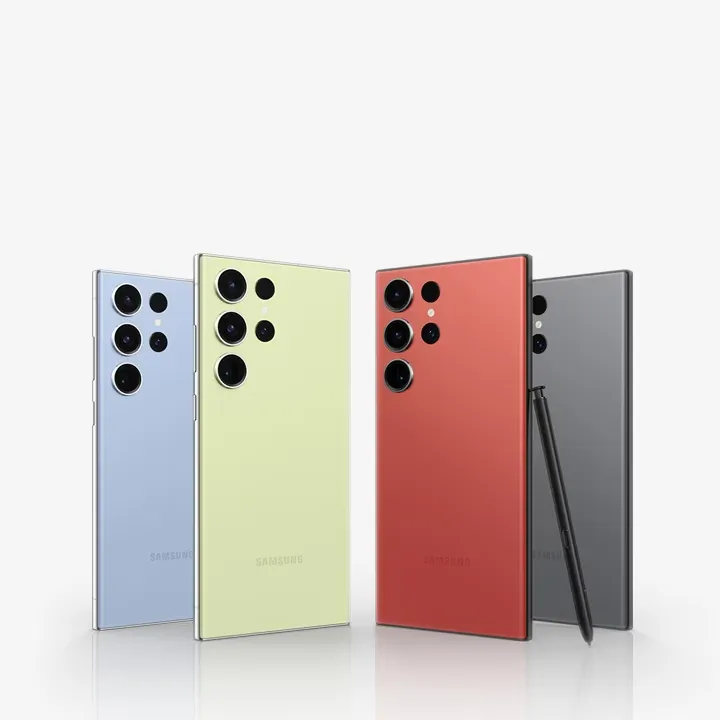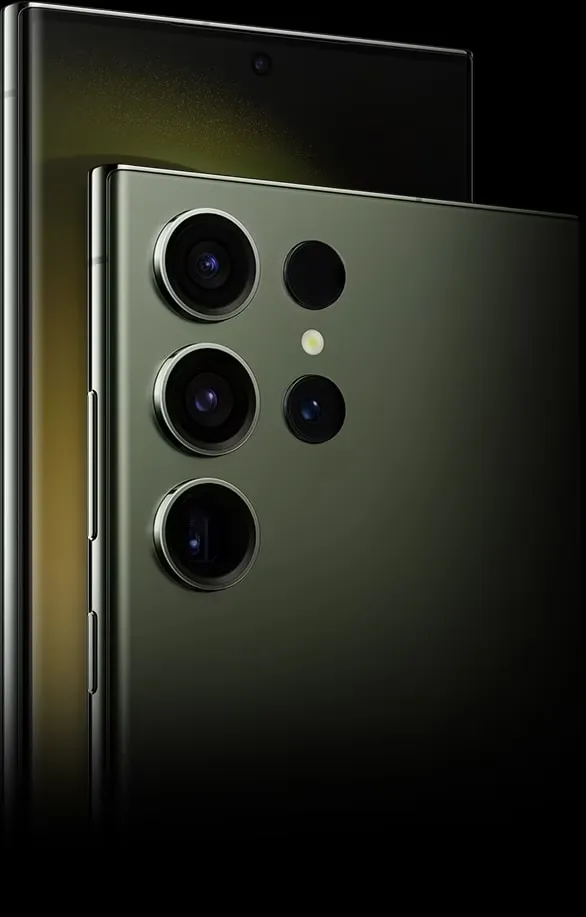Since the end of the year 2022, Xiaomi has completed its catalog of smartphones with the 12T Pro. Samsung follows the Chinese manufacturer by presenting its Galaxy S23 Ultra. As Samsung wishes, will the S23 Ultra be the best Android on the market against its competitors like the 12T Pro? We will know by reading this article.
| Xiaomi 12T Pro | Galaxy S23 Ultra | |
|---|---|---|
 | $584.00 | $1,199.99 |
Comparison of the Xiaomi 12T Pro and Galaxy S23 Ultra Designs and Screens

The design of the Xiaomi 12T Pro is similar to the Xiaomi 12 Pro. The back of the smartphone is a plastic shell. It measures 163.1 x 75.9 x 8.6 mm and weighs 205 g; the Xiaomi 12T Pro is certified with IP53 standard meaning that the phone is protected against dust infiltration.
The Amoled technology display of the 12T Pro is 6.67 inches. It has a definition of 2712 x 1220 pixels with a refresh rate that varies between 30 and 120 Hz. This screen has a brightness that can go up to 922 cd/m² for readings even in direct sunlight. In a dark environment, this brightness can go down to 2 cd/m². A reflectance of 42.4% allows good readability even outdoors.

For its Galaxy S23 Ultra, Samsung has taken the design of the Galaxy S22 Ultra with some slight differences. The S23 Ultra is an impressive smartphone. Its back is made of polished glass. It has a Gorilla Glass Victus 2 protection against drops and carries an S-Pen stylus on its bottom edge.
The S23 Ultra measures 163 x 78 x 8.9 mm with a weight of 235 g. You have to use both hands to carry it. The phone is IP68 certified and therefore waterproof to resist water and dust.
The Galaxy S23 Ultra has a 6.8-inch FHD+ Amoled display with a resolution of 3088 x 1440 pixels. Its refresh rate varies between 1 and 120 Hz. This allows it to better save energy. The brightness of this screen can reach a maximum of 700 cd/m² in bright sunlight.
The Galaxy S23 Ultra is larger than the Xiaomi 12T Pro. With its dimensions it is less easy to carry on the arm or in a pocket. The screen of the S23 Ultra has a configuration that certainly offers a better display than the 12T pro even if the latter is likely to have a better brightness.
Which of the Xiaomi 12T Pro and the Galaxy S23 Ultra has the better camera

Xiaomi 12T Pro features a dual-sensor camera: a 200MP main module coupled with an 8-megapixel ultra-wide angle. On the front, the device carries a 20MP selfie sensor with a lens that opens at f/2.2.
The 12T Pro is capable of 8K video at 24 fps or 4K at 30 or 60 fps. The main camera uses optical stabilization (OIS) that limits the effects of shaking.

The Galaxy S23 Ultra offers a quadruple camera: a main module ISOCELL HP2 of 200 MP (f/1.7), an ultra wide angle sensor of 12 MP (f/2.2) and two modules of 10 megapixels each (f/4.9 and f/2.4). On the front there is a 12MP selfie sensor (f/2.2).
As for video, the Galaxy S23 Ultra can shoot in 8K at 30 fps.
With its camera setup, the Galaxy S23 Ultra is a photography and video ace ahead of the Xiaomi 12T Pro.
Technical specifications of the Xiaomi 12T Pro and the Galaxy S23 Ultra

The Xiaomi 12T Pro is powered by Qualcomm’s Snapdragon 8+ Gen 1. The processor is paired with 8GB to 12GB of RAM. A storage of 256GB is available for internal memory.
With Qualcomm’s chip, the 12T Pro doesn’t experience any slowdown even when running demanding apps. For gaming, the smartphone manages to run at the average speed of 70 fps reaching the maximum of 82 fps. which makes it suitable for the most demanding games.
Added to the energy efficiency of the processor, a steam chamber helps to reduce heating.

With the Galaxy S23 Ultra, Samsung leaves its Exynos SoC for Qualcomm’s, especially with the Snapdragon 8 Gen 2. The processor is coupled with 12 GB of RAM. The internal memory of the phone varies between 256 GB and 1 TB.
With the Snapdragon 8 Gen 2, the S23 Ultra is assured of excellent fluidity in multitasking and especially the ability to run the most demanding games. The phone also benefits from Qualcomm’s processor energy performance on heat control.
No doubt that the 12T Pro and the S23 Ultra are very powerful. But the S23 Ultra benefits from the services of the most powerful processor currently on the market.
Xiaomi 12T Pro and Galaxy S23 Ultra battery life

The Xiaomi 12T Pro is powered by a 5000 mAh battery of power. According to Xiaomi the phone can achieve a day’s worth of battery life thanks to the Snapdragon 8+ Gen 1 integration.
The charger of the 12T Pro has a fast charging speed of 120W. in just 19 minutes it is able to fill up according to Xiaomi.

The Galaxy S23 Ultra is also powered by a 5000 mAh battery. The site Frandroid, according to its tests, gives it an autonomy of up to 3 days in normal use. Certainly thanks to the energy performance of the Qualcomm Snapdragon 8 Gen 2 processor.
The S23 Ultra has a fast charge of only 45W. surprising for a high-end phone. Its adapted charger takes an hour to fill up. Note that since the Galaxy S21 Samsung phones are no longer delivered with the charger.
Overall, the Galaxy S23 Ultra outperforms the 12T Pro in autonomy even if the latter has a more efficient fast charge.
Xiaomi 12T Pro and Galaxy S23 Ultra pricing and market presence
The Xiaomi 12T Pro has been available since October 2022. The phone was launched at € 799.
Already available on Samsung’s website and its partners, the price of the Galaxy S23 varies depending on the version:
- 256 GB: 1419 euros
- 512 GB: 1599 euros
- 1 TB: 1839 euros
Who is the best between the Xiaomi 12T Pro and the Galaxy S23 Ultra
Unquestionably, the Galaxy S23 Ultra is more impressive than the Xiaomi 12T Pro. It will attract fans of large and imposing phones. On the other hand, those who prefer more discreet and easy-to-wear smartphones will go for the Xiaomi 12T Pro.
The S23 Ultra is more suitable for directors as it has a better image and video offer. Even gamers will be happier to have it thanks to its autonomy and processor. So we can’t be surprised to see the Xiaomi 12T Pro being less expensive than the Galaxy S23 Ultra.
To discover :
- Is Xiaomi 12 Lite 5G better tha Galaxy A54 5G?
- Tesla Mode Pi vs Xiaomi 12 Pro: which one is better ?
